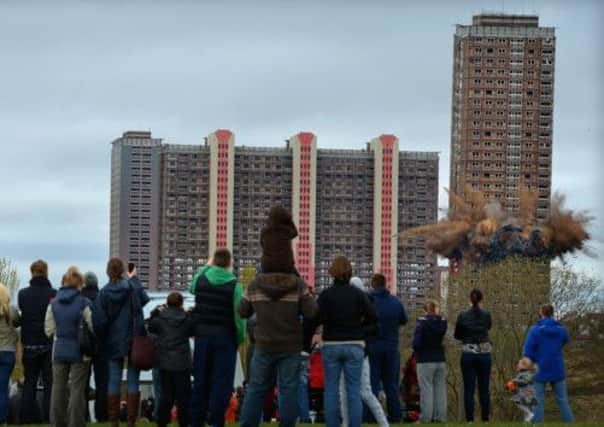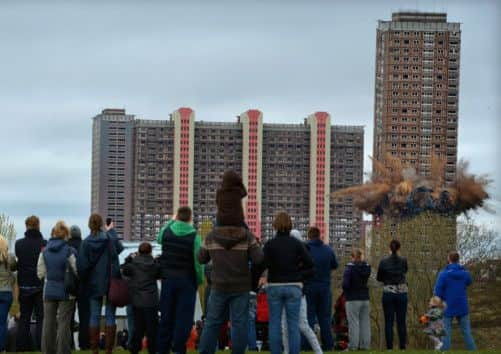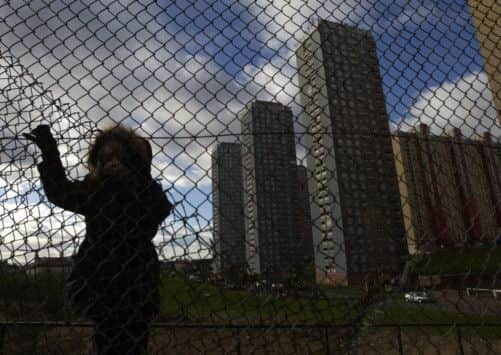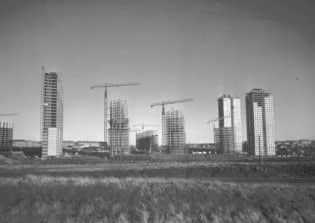Video: Glasgow Red Road block of flats demolished


Watched by onlookers at vantage points around the area, the 30-storey building at Birnie Court, one of the Red Road tower blocks, was yesterdaybrought down in a controlled blast.
The controlled blast was part of plans by Glasgow Housing Association (GHA) to regenerate Balornock and Barmulloch in the north-east of the city.
Advertisement
Hide AdAdvertisement
Hide AdBuilt in the mid-1960s, these eight blocks housed about 4,000 people and were once the highest flats in Europe.


Fewer than 300 now live there, after decades of the buildings becoming run-down.
Even after falling into decline, the estate remained an important part of the Glasgow skyline and formed the inspiration for many books and films.
While many artists, writers and film-makers were initially attracted by the architecture, it was the residents that maintained their interest.
In 2006, director Andrea Arnold used the flats as the setting for her Scottish Bafta-winning film Red Road, and Alison Irvine’s 2011 novel This Road is Red was based on interviews with people living there.


GHA’s executive director of development and regeneration, Alex McGuire, said: “It all culminates on the blowdown day, but there are months of planning that go into this.
“This block’s been prepared for demolition for over a year now. There are the physical aspects of stripping out all the materials from the block that you don’t want to feature in the blowdown, but there’s also a lot of work that takes place with the community.
“We really appreciate the co-operation of the local residents, who had to get evacuated from their homes to allow this blowdown to happen.”
Advertisement
Hide AdAdvertisement
Hide AdThis was the second Red Road multi-storey to be demolished, following a similar blast in June last year.


Mr McGuire said: “We’re working with our partners to create new homes and communities across the city that people will want to live in for years to come.”
About 450 homes were evacuated for the blowdown, with many of the residents staying with family or friends, or visiting the evacuation centre at All Saints Secondary School.
One former resident, Frances Smith, 49, now of Bishopbriggs, said that watching the building disappear into a cloud of dust was a surprisingly emotional experience.
She said. “I just think back to my mum and dad and various family members who are no longer with us and just think of all the happy times that we had in the flat.”
But she added: “Children deserve better than being stuck away up in a high-rise flat with nothing to do.”
The clear-up operation will take several months to complete. The steel will be removed and recycled and the remaining rubble will be crushed and used as foundations for roads and buildings.
Now that 21 Birnie Court has been brought down, six tower blocks remain. They are all set to be demolished by 2017.